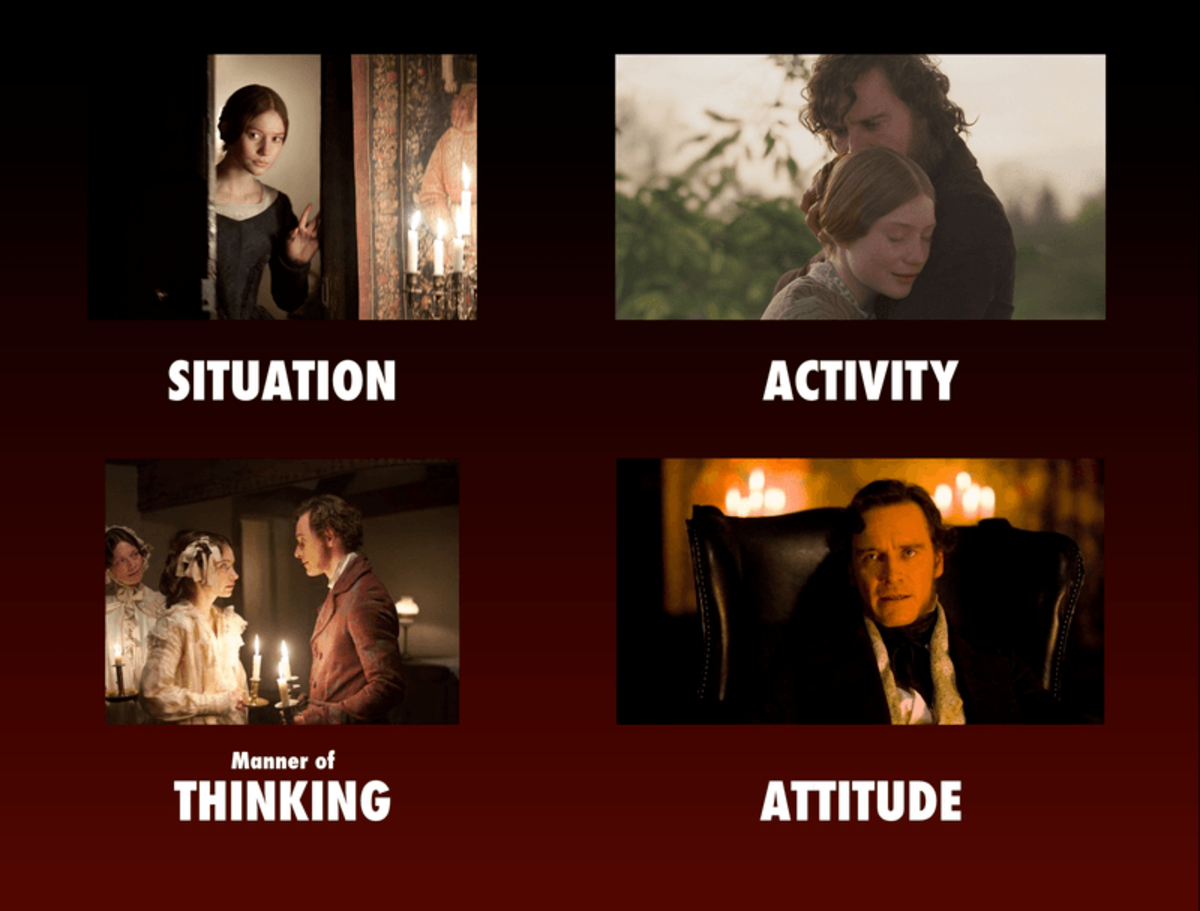
Jane Eyre
Stories about relationships work best when they look from within the relationship and from without.
A complete story consists of Four Throughlines: the Objective Story, Main Character, Obstacle Character, and Relationship Story Throughlines. With many of the narratives found in our Throughline Thursdays feature, the distinction between these various perspectives is easy to find. Some stories, however, feature subject matter that blurs the line and makes it difficult to determine what is a Relationship Story Throughline and what is an Objective Story Throughline.
Why Bother?
The Four Throughlines provide an opportunity for the Author to communicate his or her point-of-view on the best way to approach solving problems. Rather than thinking of them as "storylines" or individual characters, if you see them for what they really are--four separate perspectives--their purpose shines clear.
The Main Character Throughline shows what it is like when I experience a problem. The Obstacle Character Throughline clues us in on what it is like when You run into conflict. The Relationship Story Throughline lets the Audience in on what it is like when We struggle to sort things out. And finally, the Objective Story Throughline shows the kind of conflict They encounter.
With all four perspectives accounted for, an Audience member accepts the narrative without the doubt and trepidation that accompanies half-baked arguments.
Stories About a Relationship
Romances often position the central relationship smack dab in the middle of the Objective Story Throughline perspective. Moulin Rouge! finds conflict in what everyone thinks Christian and Satine should or shouldn't do. Heavenly Creatures focuses on what everyone thinks about Juliet and Pauline's "unhealthy" relationship. A Room with a View finds everyone concerned about the relationship between Lucy Honeychurch and George Emerson. Differentiating these concerns from the actual relationship presents a difficult challenge--until one thinks in terms of perspective.
They may share concerns about the relationship, but We ourselves share our own private concerns. They may worry about what Satine and Christian may become, but we struggle about claiming exclusive rights to one another. They may express concern over Lucy and George's budding romance, but we encounter conflict surrounding finding something uniquely ours.
They may see our relationship in a particular light, but we ourselves experience it very differently.
The Throughlines of Jane Eyre
Charlotte Brontë's novel Jane Eyre and the film adaptation by Cary Fukunaga[^1] focus attention on the relationship between the two principals: Jane Eyre (Mia Wasikowska) and Rochester (Michael Fassbender). Everyone expresses their concern over the romance developing between them: Lady Blanche Ingram for whom Rochester intends to marry, Richard Mason who reveals Rochester's marriage to Mason's sister Bertha, and eventually Bertha herself. Their various Manners of Thinking set the stage for the Objective Story Throughline.
Yet, it is the Physics Jane and Rochester engage in that define the edges of the Relationship Story Throughline. The physical experience of being in the relationship, the passion and illicit conjugations, sit front and center within that We perspective. By juxtaposing these two points-of-view on the same relationship, objective plural and subjective plural, an Author develops greater more comprehensive understanding within the minds of their Audience.
As the focal point of the Main Character Throughline, Jane suffers through various Universes that lock her down throughout her life. An abusive aunt, trapped in a room with her dead uncle, the Lowood School for Girls (more abuse), governess at Thornfield Hall--all instances of conflict bred from untenable situations.
Finally, Rochester himself--a veritable force of nature driven by untold rage and anger--acts as the Obstacle Character upon Jane's Main Character. His Mind and brooding demeanor challenge Jane to rise above any setbacks and determine for herself what she truly wants and desires.
[^1]: Fukunaga, of True Detective and Beasts of No Nation fame
A Form for Romance
Many romance narratives position the Four Throughlines this way--with the Objective Story Throughline in Psychology, or Manner of Thinking, and the Relationship Story Throughline itself in Physics. The various objective dysfunctions surrounding the development of a new relationship balance out nicely against the subjective concerns of possessing one another both in and out of bed.
Download the FREE e-book Never Trust a Hero
Don't miss out on the latest in narrative theory and storytelling with artificial intelligence. Subscribe to the Narrative First newsletter below and receive a link to download the 20-page e-book, Never Trust a Hero.


